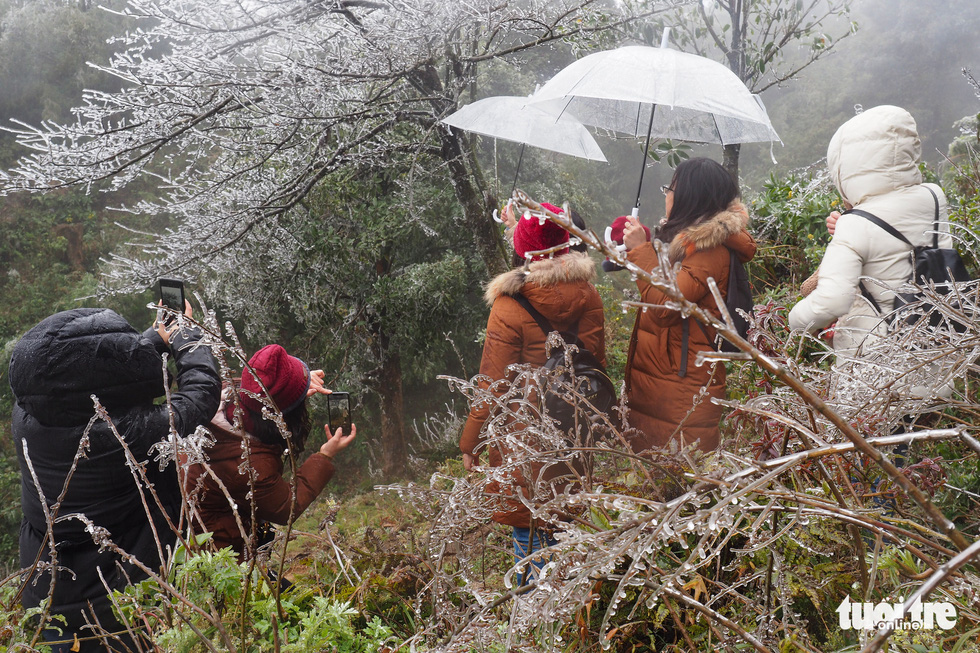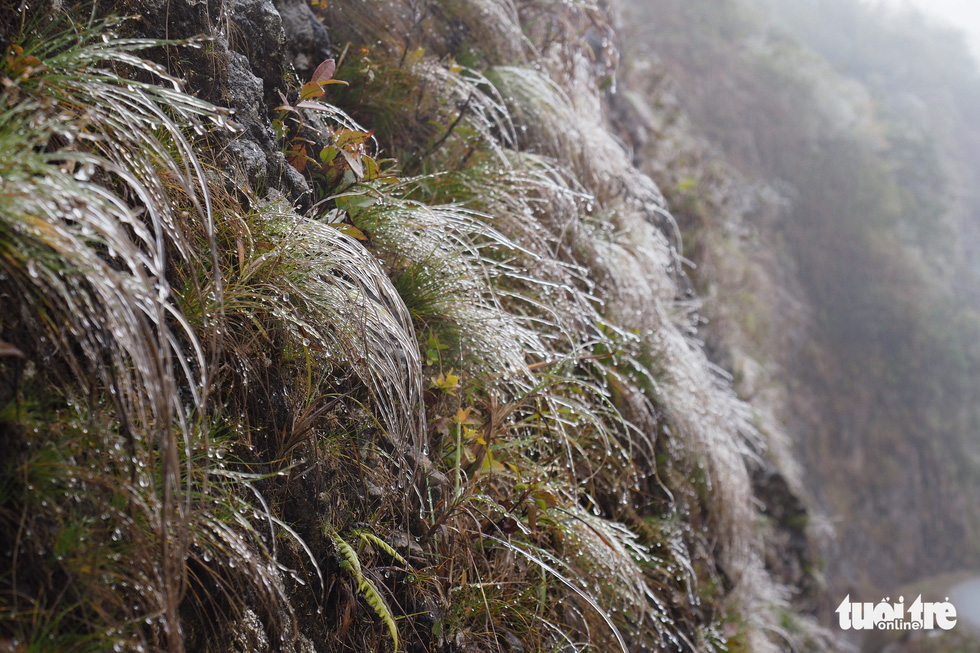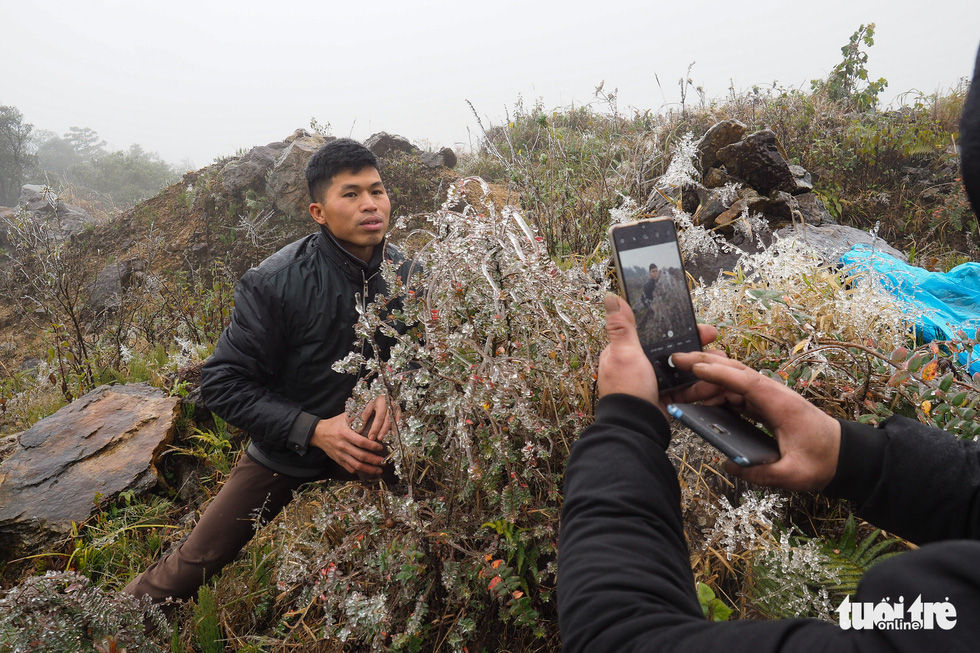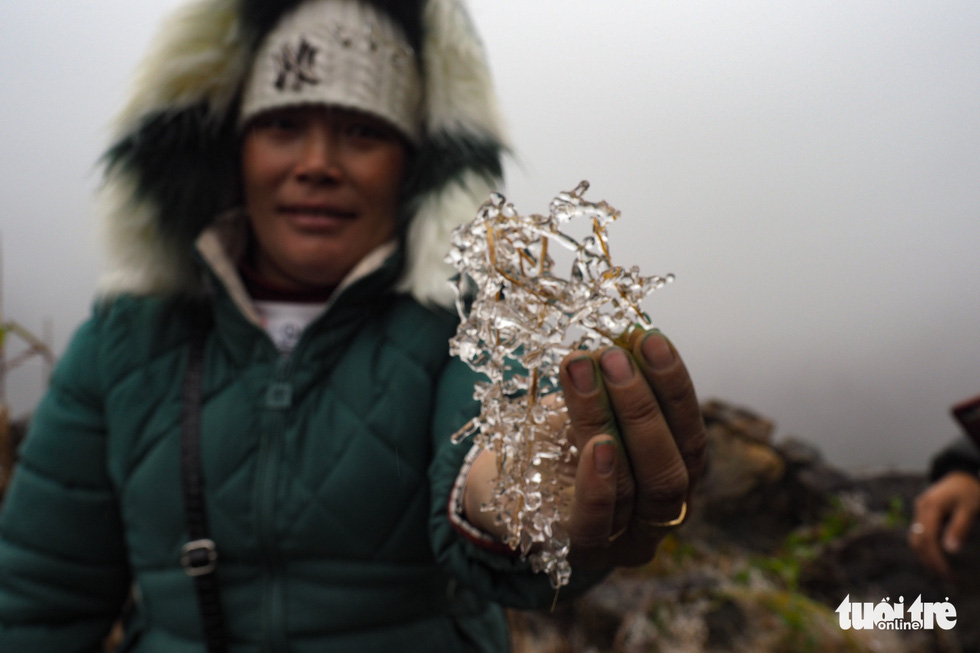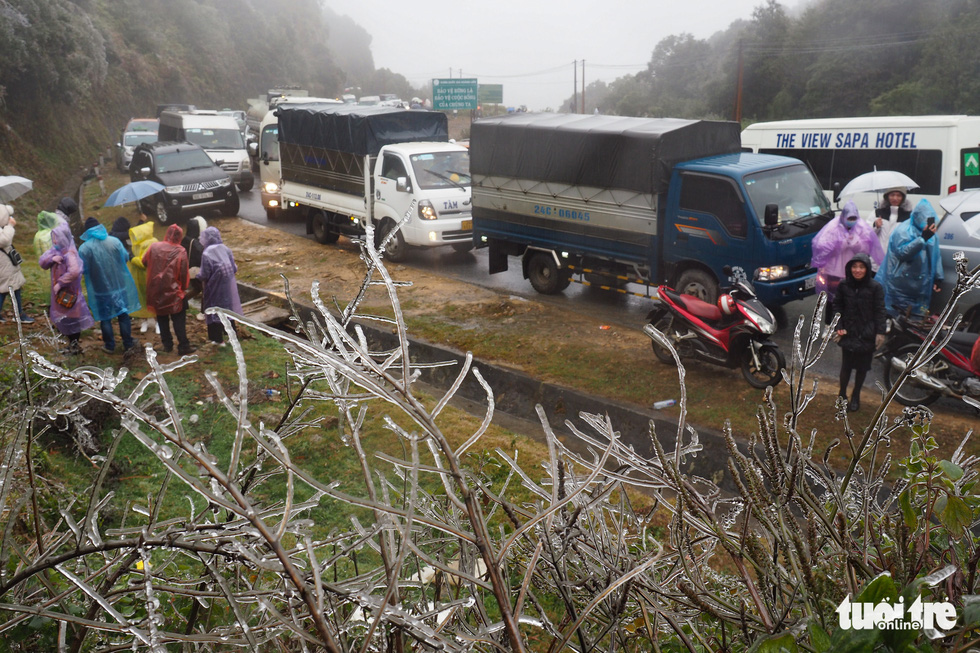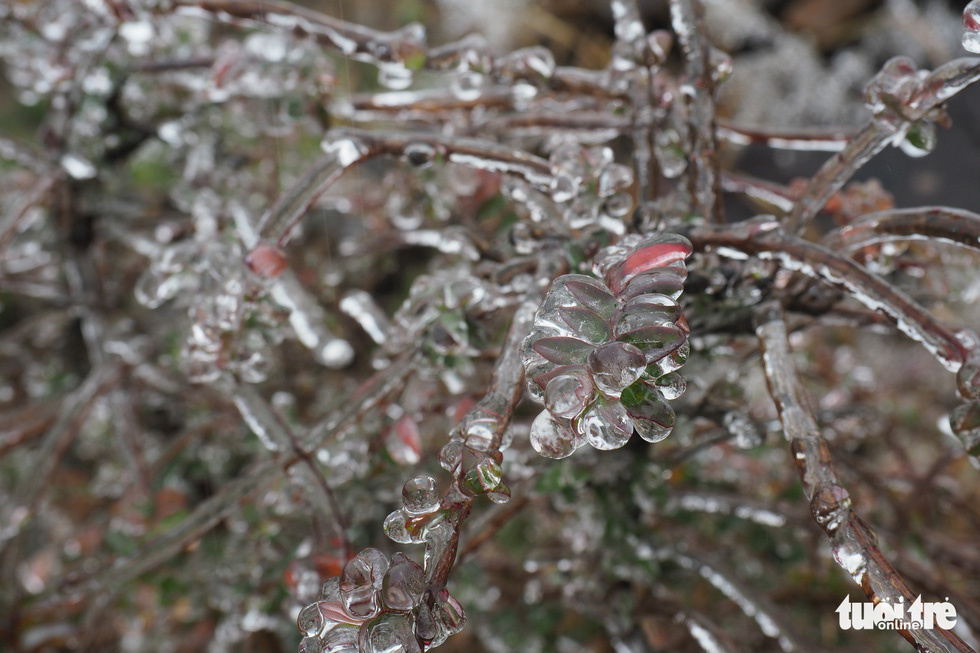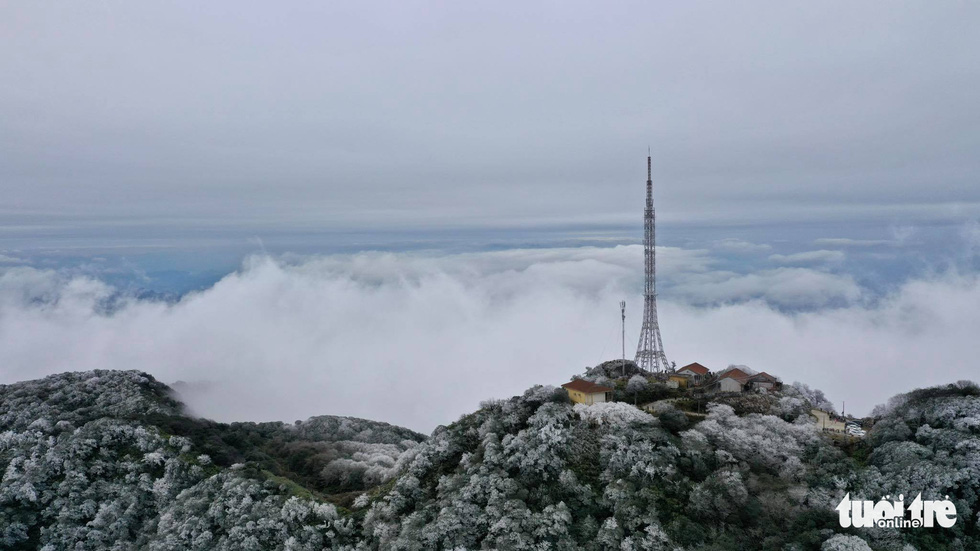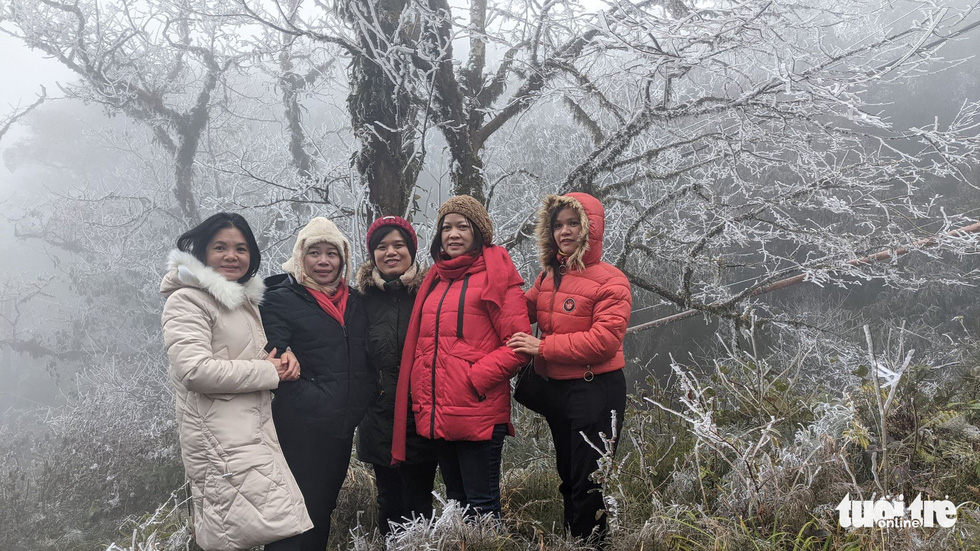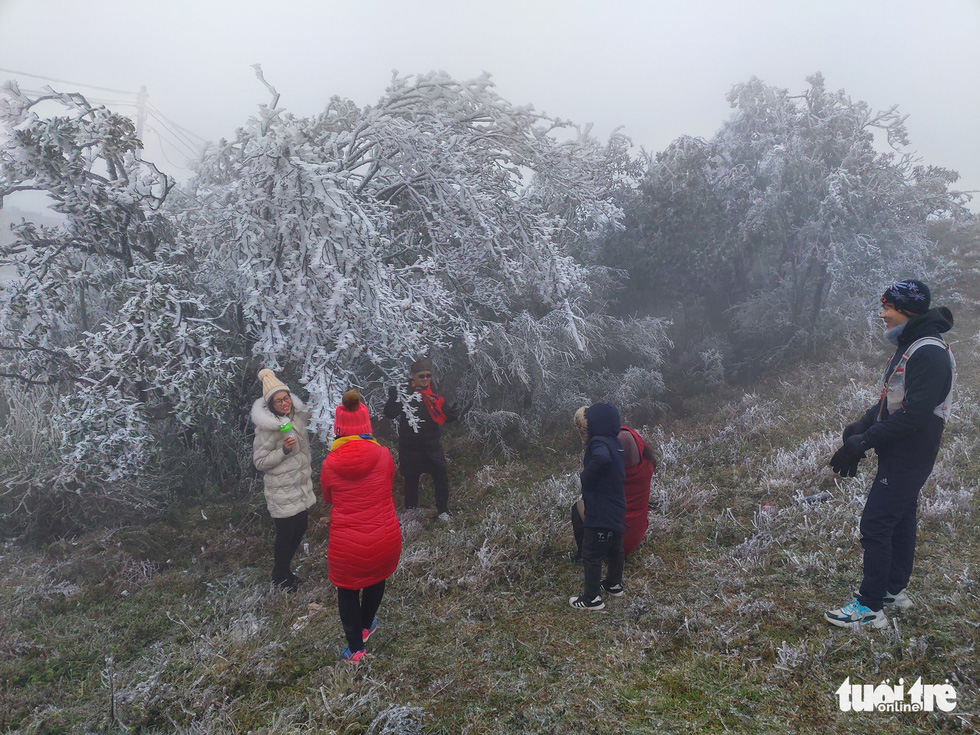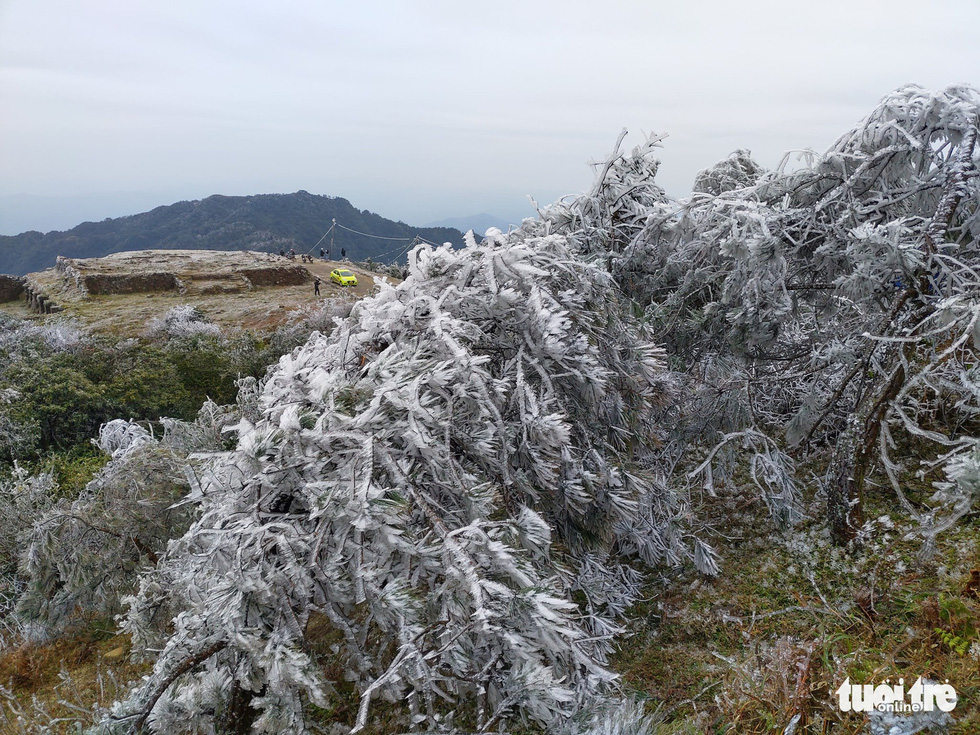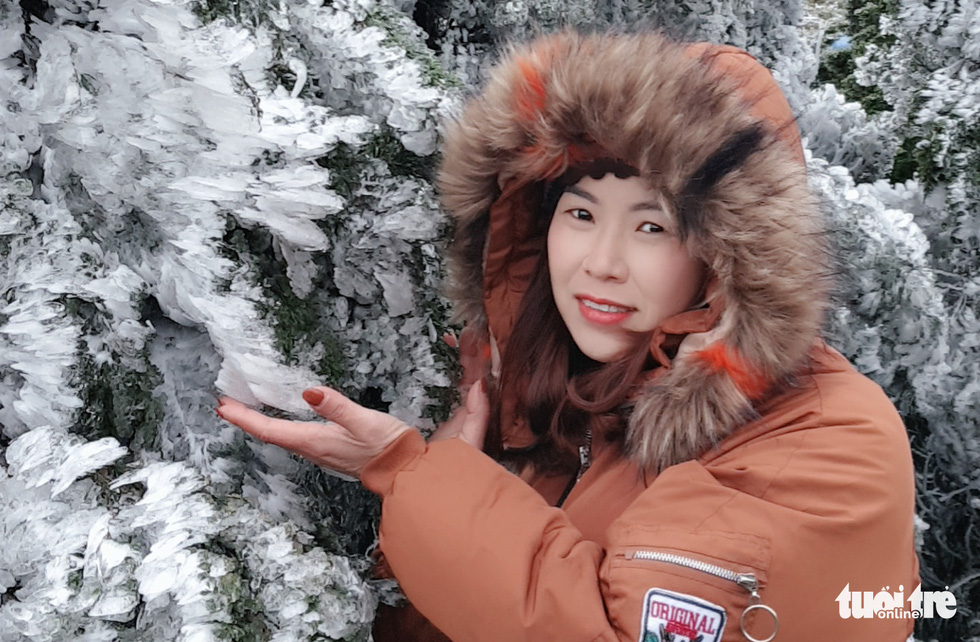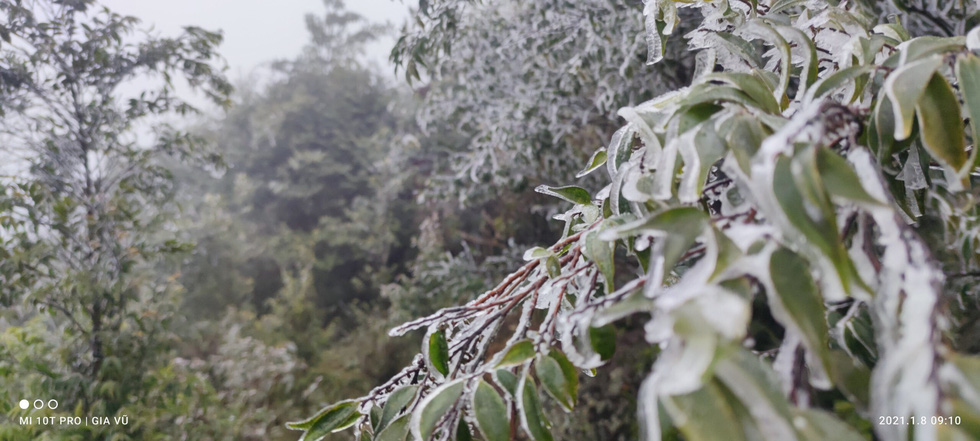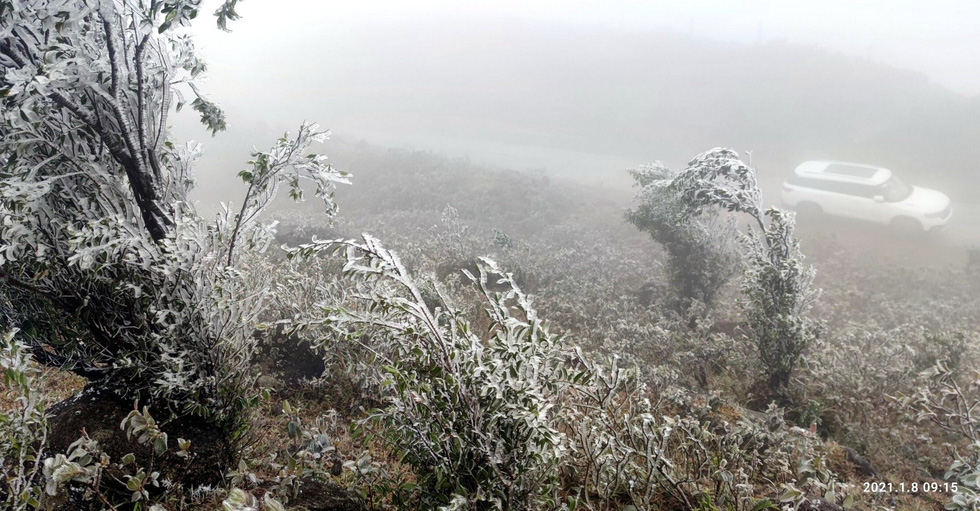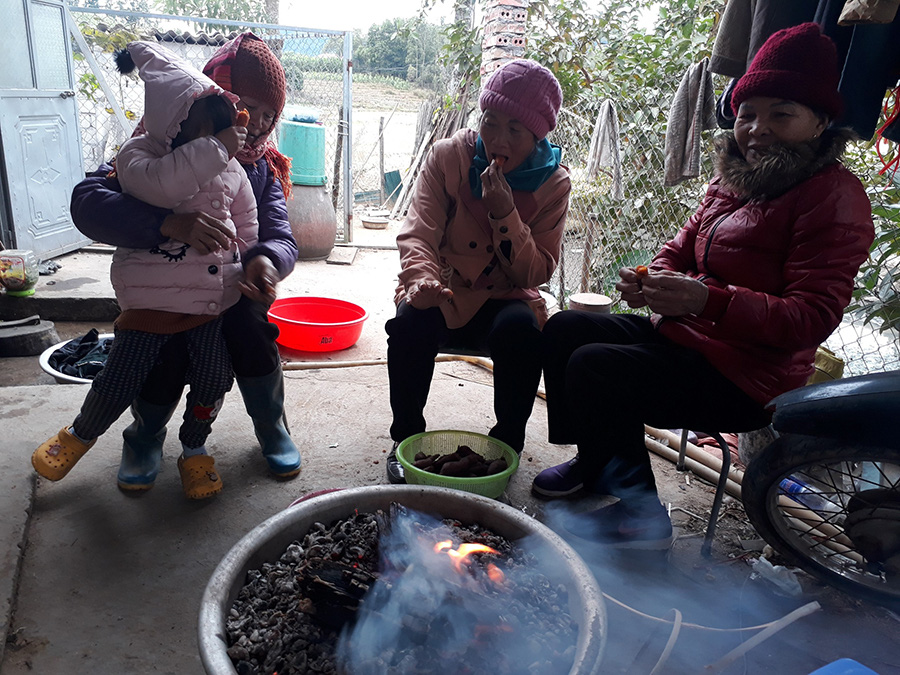As frost and light snow descent on mountaintops across northern Vietnam, tourists nationwide are heading north to catch a glimpse of the rare wintry weather.
Frost covered peaks towering over the O Quy Ho Pass in Lao Cai Province’s Sa Pa Town as temperatures in the locale dropped to minus one degree on Monday morning.
As the day progressed, the frost began creeping into lower altitudes and magnifying the beauty of famous natural landmarks, including three-kilometer length from Thac Bac Waterfall to the O Quy Ho Pass.
Given how seldom snow makes its way to Vietnam, it is no surprise that O Quy Ho drew massive crowds of tourists throughout the week, causing heavy delays on the 4D expressway leading to it as visitors clamored to see the crystalized waterfall.
|
|
| Frost covers grass on the O Quy Ho Pass in Lao Cai Province, Vietnam, January 9, 2021. Photo: Vu Tuan / Tuoi Tre |
|
|
| Tourists pose near crystalized plants along the O Quy Ho Pass in Lao Cai Province, Vietnam, January 9, 2021. Photo: Vu Tuan / Tuoi Tre |
|
|
| Frost forms on tree branches along the O Quy Ho Pass in Lao Cai Province, Vietnam, January 9, 2021. Photo: Vu Tuan / Tuoi Tre |
|
|
| Traffic is heavily congested along the O Quy Ho Pass as visitors from across Vietnam flocked to the region to see snow on January 9, 2021. Photo: Vu Tuan / Tuoi Tre |
|
|
| Frost forms on tree branches along the O Quy Ho Pass in Lao Cai Province, Vietnam, January 9, 2021. Photo: Vu Tuan / Tuoi Tre |
Meanwhile in Cao Bang Province, the rime frost that covers the top of Mount Phja Oac has yet to melt, which attracted a large crowd of curious tourists to the locale, according to local resident Ha Cuong.
|
|
| The Phjia Oac mountain range in Cao Bang Province, Vietnam is covered in frost on January 9, 2021. Photo: Ha Cuong |
|
|
| The Phjia Oac mountain range in Cao Bang Province, Vietnam is covered in frost on January 9, 2021. Photo: Ha Cuong |
|
|
| The Phjia Oac mountain range in Cao Bang Province, Vietnam is covered in frost on January 9, 2021. Photo: Ha Cuong |
|
|
| Visitors take photos near the crystalized landscape in Cao Bang Province, Vietnam, January 9, 2021. Photo: Ha Cuong |
Frost has also covered Mount Mau Son in Lang Son Province since Friday last week, where temperatures sit at minus 3.4 degrees Celsius, according to Minh Duc, an officer at Lang Son Tourism Promotion Center.
“The frost was still thick on Saturday morning [last week] even though temperatures rose slightly,” Duc said, adding that he expected the freeze to thaw through the end of Sunday.
According to Duc, the droves of tourists are still pouring in to the area to take in the sight of snow, leading to congested roads and full bookings at local hotels.
|
|
| Visitors take photos near the crystalized landscape on Mount Mau Son in Lang Son Province, Vietnam, January 9, 2021. Photo: Minh Duc |
|
|
| The crystalized landscape on Mount Mau Son in Lang Son Province, Vietnam, January 9, 2021. Photo: Minh Duc |
|
|
| A visitor takes photos near the crystalized landscape on Mount Mau Son in Lang Son Province, Vietnam, January 9, 2021. Photo: Minh Duc |
|
|
| Traffic congestion on the road to Mount Mau Son in Lang Son Province, Vietnam, January 9, 2021. Photo: Minh Duc |
Frost also covered Mount Cao Ly in the coastal province of Quang Ninh late last week.
By last Friday, a cold spell in the province had caused mercury in the mountainous areas of Binh Lieu, Ba Che, and Dam Ha, to drop to 4-7 degrees Celsius, while temperatures on Mount Cao Ly were reported at zero degrees Celsius and below.
|
|
| Frost forms on tree branches on Mount Cao Ly in Quang Ninh Province, Vietnam, January 8, 2021. Photo: Ly Cuong / Tuoi Tre |
|
|
| Frost forms on tree branches on Mount Cao Ly in Quang Ninh Province, Vietnam, January 8, 2021. Photo: Ly Cuong / Tuoi Tre |
|
|
| Residents gather around a fire in Binh Lieu District, Quang Ninh Province, Vietnam, January 8, 2021. Photo: Ly Cuong / Tuoi Tre |
Like us on Facebook or follow us on Twitter to get the latest news about Vietnam!



